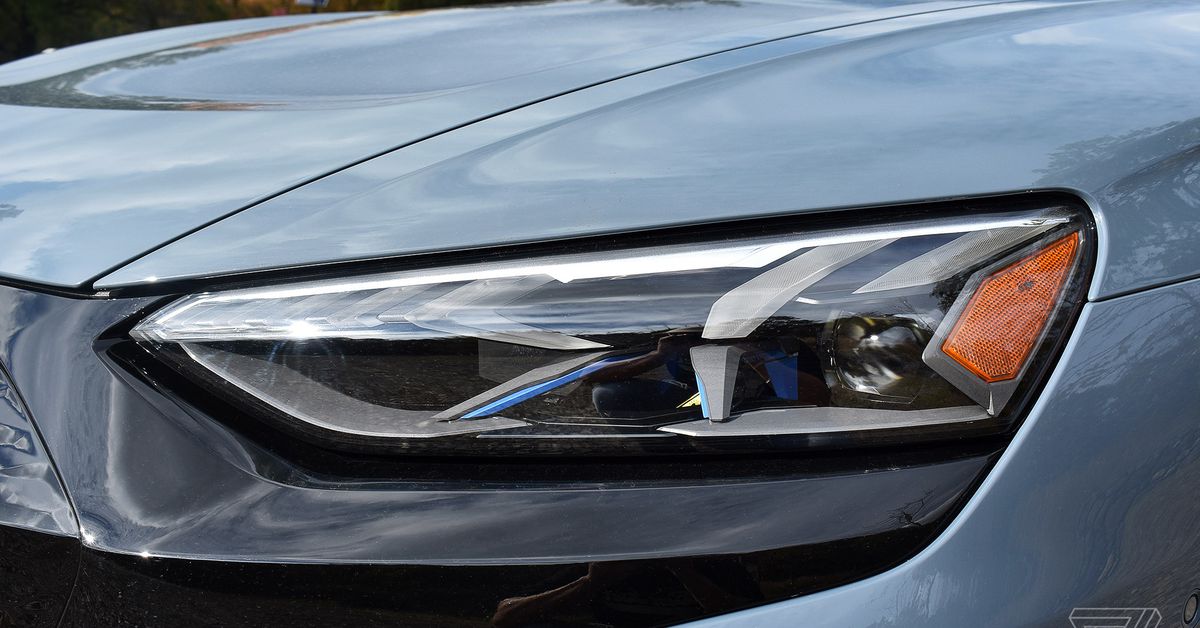 The National Highway and Traffic Safety Administration (NHTSA) announced a final ruling this week that permits automakers to finally add Adaptive Driving Beams (ADB) for vehicles on US roads.
The National Highway and Traffic Safety Administration (NHTSA) announced a final ruling this week that permits automakers to finally add Adaptive Driving Beams (ADB) for vehicles on US roads.
Adaptive headlights, available on many vehicles in Europe, Canada, and Japan, have been prohibited in the US due to rigid and outdated federal regulations.Federal Motor Vehicle Safety Standards (standard no.108) specified requirements for lamps and reflectors dating back to 1967, which standardized binary hi / low beams, which as a result stifled newer headlight technology.
But now, after the passage of President Joe Biden’s $1 trillion infrastructure bill late last year , NHTSA was directed to amend FMVSS no.108.The agency was given two years to take action but was able to make the change a year and a half ahead of schedule.
NHTSA claims that the final rule will improve safety for pedestrians and bicyclists by making them more visible at night and will help prevent crashes by better illuminating animals and objects in and along the road.
“NHTSA prioritizes the safety of everyone on our nation’s roads, whether they are inside or outside a vehicle.New technologies can help advance that mission,” said Steven Cliff, NHTSA’s Deputy Administrator, in a statement.
Adaptive Driving Beams are a headlight technology with automated beamforming, controlled by a computer that aims lights in different directions.It can brighten your path directly ahead and dim the lights that shine outward that could blind oncoming drivers.
In its final ruling, NHTSA sought to “ensure that ADB systems do not increase glare to other motorists beyond current lower beams,” which was a concern when the agency previously assessed the technology in 2015.
Audi’s Digital Matrix LED is an ADB system that can form a light “carpet” on the road ahead using almost one million micro mirrors.Image: Audi Since that last assessment, AAA conducted comparative research of US and European headlamps in 2019 , concluding that European vehicles equipped with ADB “less frequently” produced glare to oncoming drivers when cresting hills versus US vehicles without the feature.
But automakers have had to hold back the advanced lighting technology in the US and instead include features like cornering or curving headlights, in which the beam turned in the direction of travel, as well as automatic high beams.Some drivers have found automatic high beams frustrating, though, because of how often they can misread oncoming traffic and start strobing.
Auto hi-beams can be a frustrating feature Many modern American vehicles are equipped with automatic hi-beams, including Lincoln MKZs, Tesla Model 3s, and even Chrysler Pacifica minivans, which can behave erratically when trying to interpret oncoming headlights as compared to other lights and reflections.
This is where ADB really shines: it can keep the central beam, providing excellent visibility ahead while dimming the extremities of the beam “cone” to keep oncoming traffic from getting blinded.
There are also even more advanced ADB systems like Audi’s Digital Matrix headlights in the latest E-tron models , which can create a “carpet” of brighter light ahead, and even widen the beam to another lane in preparation for a lane change.
Expect to see ADB in new model year vehicles in the US as early as later this year.Ideally, it will come standard to more vehicles instead of being locked behind a paywall like BMW has done for its auto high beam feature..
